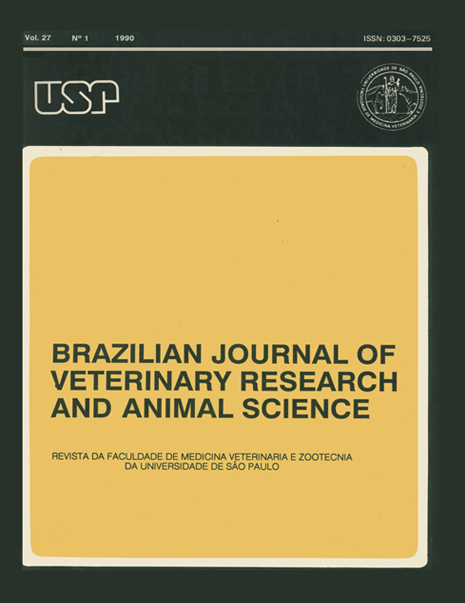Implant of equine pericardiun in diaphragmatic lesions in dogs
DOI:
https://doi.org/10.11606/issn.0000-0000.27165-73Keywords:
Pericardium of equine, Diaphragm of dogs, Surgery of dogs, GycerinAbstract
The objective of the present work was to use equine pericardiun preserved in glycerin as an implant to correct diaphragmatic lesions in adult mongrel dogs. After laparotomy, a 4 x 4 cm fragment of the muscular coat of the diaphragma was resected; afterwards the lesion was occluded by an implant of pericardium through a festoned suture using chromic catgut 3-0. The dogs did well during the post-operative period, with no signs of respiratory restriction. The animals (5/group) were sacrificed 7, 15, 30, 45and 60 days post-surgery. At the autopsy, the findings of the diaphragma and surrounding tissues were noted and fragments were taken for histopathology. Grossly the implant occluded completely the induced lesion, was adhered to the liver and pericardium and decreased in size without interfering with the diaphragma elasticity. At the histology, there was an initial phase (day 7 and 15) characterized by an acute inflammatory response followed by a reparative process ending up with the appearance of newly formed fibrous membrane which totally replaced the former muscular coat. The present procedure seems to be an adequate
technique to repair diaphragmatic lesions in small animals. In addition, it employs a material which is non-expensive and easy to obtain, to keep and to apply.
Downloads
Download data is not yet available.
Downloads
Published
1990-06-01
Issue
Section
ANIMAL PATHOLOGY
License
The journal content is authorized under the Creative Commons BY-NC-SA license (summary of the license: https://
How to Cite
1.
Ranzani JJT, Gandolfi W, Franco M, Castro GB de, Nicoletti JL de M. Implant of equine pericardiun in diaphragmatic lesions in dogs. Braz. J. Vet. Res. Anim. Sci. [Internet]. 1990 Jun. 1 [cited 2024 Jul. 26];27(1):65-73. Available from: https://www.revistas.usp.br/bjvras/article/view/51839





